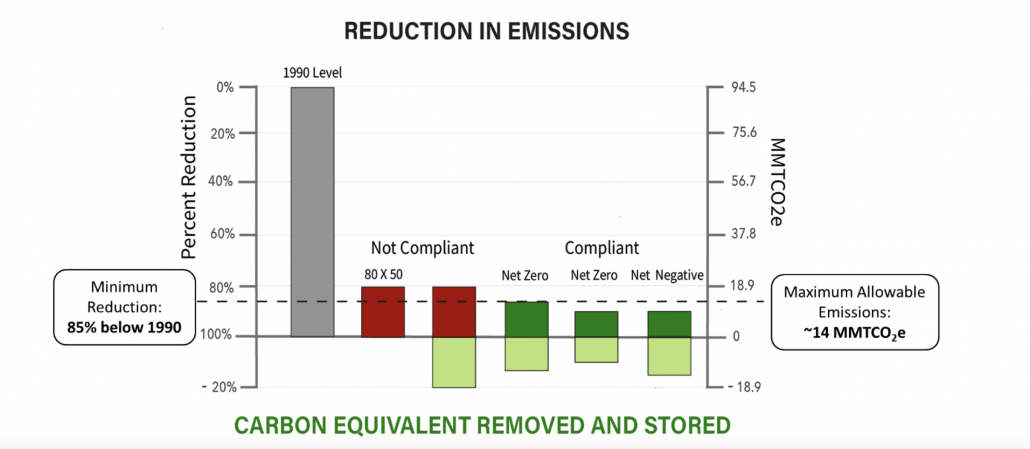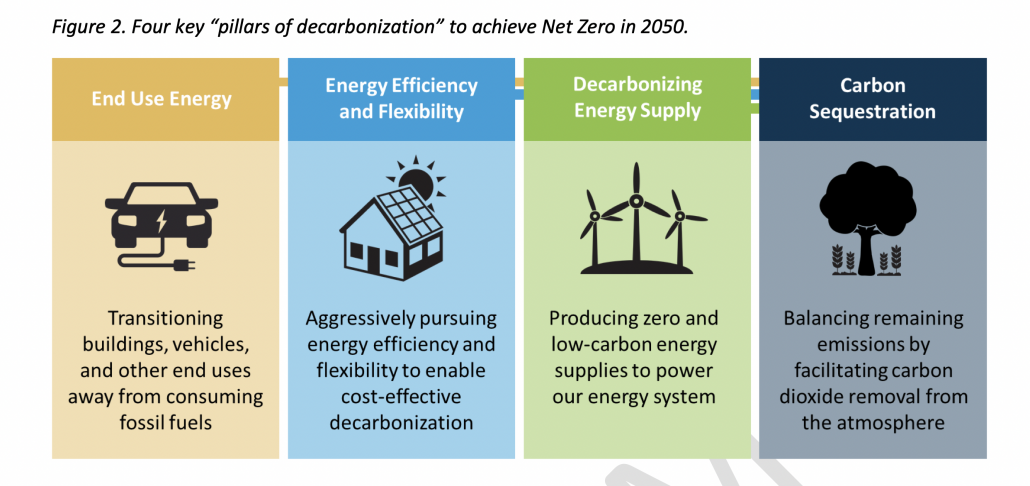What are Massachusetts Clean Energy Goals?
Massachusetts is already a leader in the clean energy sector! Here are some quick facts from the MassCEC:
- “Clean energy is a $14 billion industry in Massachusetts and represents over 3 percent of the overall Massachusetts economy”
- “Massachusetts ranked #1 for highest percentage of clean energy workers per capita in the U.S.”
- “Massachusetts ranked #2 most energy efficient state in the country by ACEEE (2020)”
- “Boston ranked #2 city for clean energy by ACEEE (2020)
Due to many different initiatives including the SMART program, Massachusetts has made great strides clean energy growth over the years. However, there is still lots of room for improvement.
One important step in the fight against climate change is achieving net zero emissions. Many companies, countries, and other entities are striving for this goal all around the world.
What does net zero mean? When a country reaches net zero, all of the carbon dioxide emissions produced by the country or other entity are offset by the amount of carbon that it can sequester. In many cases, reducing carbon emissions is easier than sequestering carbon. So, clean energy solutions (like solar power!) are an important part of many of these net zero goals.
Massachusetts has gone further than just a net zero goal with its “Act Creating a Next-Generation Massachusetts Climate Policy.” The standards of this policy mandate that by 2030, emissions be half of what they were in 1990. By 2040, they will be 75% below this level. Then, the goal is for the state to achieve net zero by 2050. In order to achieve this goal, the law has laid out many priorities and strategies and other changes. The next few paragraphs will outline the other major elements of the law.
The figure above from the Massachusetts Clean Energy and Climate Plan for 2025 and 2030 shows the net zero goal graphically.
The New Climate Act
To begin, this new law has an important environmental justice aspect. Environmental justice is ensuring of equitable distribution of environmental benefits and damages. In terms of solar power, many of the new incentives have benefited upper and middle class communities who are able to afford the upfront cost of installing a solar panel system, but left behind these communities that cannot. This law made some changes to the SMART program that help make it easier for lower-income households to utilize the benefits of this solar incentive. Combined with some other changes in this same vein, these environmental justice communities will get more attention from the government to help create a more equitable spread of resources and environmental benefits.
Another important change is that now, reduction of greenhouse gas emissions is part to the official responsibilities of the Department of Public Utilities. The DPU clearly has control over factors that will help us reduce emissions, like clean energy utilities, so increasing their focus on this target will only help us reach net zero faster!
In addition, the law mandates utility companies such as National Grid, Eversource, and Unitil to increase their renewable energy portfolio (aka add more renewables to their services) by 3% per year.
Next, the law also facilitates more energy efficient and zero-emissions buildings. It created a “stretch-codes,” which are higher energy efficiency standards and guidelines to help companies that want to minimize their carbon footprint.
Lastly, the law changed some of the goals of MassSave, which is the state energy efficiency program. This program will now focus and recommend solutions to decrease greenhouse gas emissions (hello solar panels!) as well as increasing energy efficiency.




